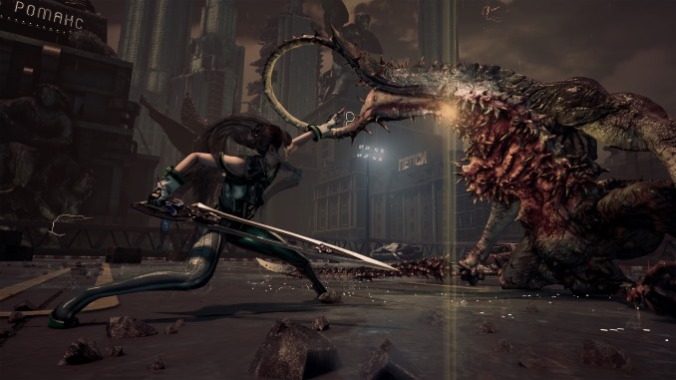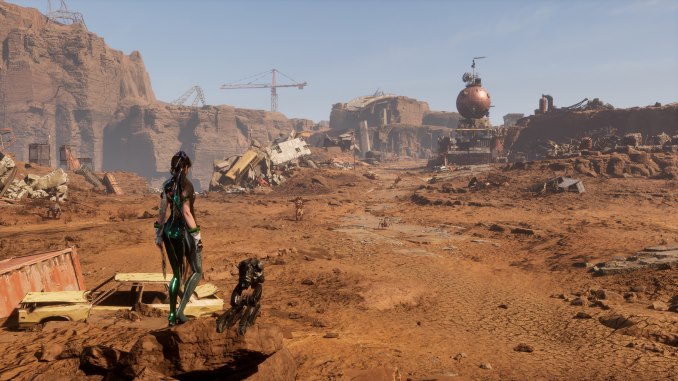Stellar Blade Is an Earthbound Bore

Stellar Blade makes a mistake seen too often from would-be blockbusters: it tries to do way too much. It does one thing pretty well, and fortunately it’s the thing the game starts with. But it keeps adding new things to do and remember, lifting ideas from various genres and tossing them out without much skill or inspiration. It’s desperate to be a modern “AAA” videogame, and it’s so worse off for that.
At the start Stellar Blade feels like a sincere and unpretentious homage to action games from the Xbox 360 and PlayStation 3 era—which means it feels like a PlayStation 2 game with a camera that doesn’t suck. You’ll hack and slash like Devil May Care or Ninja Gaiden on easy mode, quicktime your way through some boss fights, and even scatter up a dangling train car like you’re reliving Uncharted 2. The only way to tell this is not a high-def remaster of some forgotten old button-masher from a studio doing its best to ape Platinum Games is a checkpoint system straight out of From’s playbook, complete with defeated enemies returning from the grave whenever you peace out in your makeshift camp’s lawn chair for a few minutes. For the first couple of hours Stellar Blade is an acceptable enough B-movie of a game that doesn’t seem to take itself too seriously or demand anything from its players outside of reflexes.
Its early corridors are mostly linear. Occasionally they’ll run into open spaces that’ll trigger either a boss fight, a search for a specific item, or some kind of puzzle so simple and obvious that it’s an insult to puzzles. (That’s a positive thing—who doesn’t love a big dumb videogame puzzle you can solve in 30 seconds?) This all happens in that trusty videogame backdrop of a bombed-out sci-fi megacity, with a liberal dose of Biblical references and cyberpunk guff propping up a po-faced story that only pops up when it really needs to. At first Stellar Blade is refreshingly limited in its scope and ambitions, and I honestly admire that.

This is the kind of game where a character comes upon a giant sign reading “plaza” and then says “looks like this used to be some kind of plaza.” I love that. No notes.
But then it starts trying, without really trying, and that’s when Stellar Blade loses its edge. It tries just enough that it becomes bloated and boring, but not nearly enough to become interesting. An adequate, old-fashioned action game turns into a subpar RPG into a series of empty open worlds into a lackluster survival horror game, like somebody’s constantly changing the radio and every song on every format is a loser. These decisions aren’t canny parodies of these genres, like you’ll find in No More Heroes, but seem like the result of haphazardly checking features off a list. You’ll have a central town to walk around and do side quests in because that’s what RPGs do. You’ll have to climb a tower to effectively open up the next territory you enter because open world action games make you climb towers. Instead of squarely focusing on the one thing it’s passable at—combat—Stellar Blade wants to do a little bit of everything.
